Honoring our democracy in pictures
Photojournalist Sue Dorfman shows voters, volunteers, poll workers, and protestors as they make their voices heard.
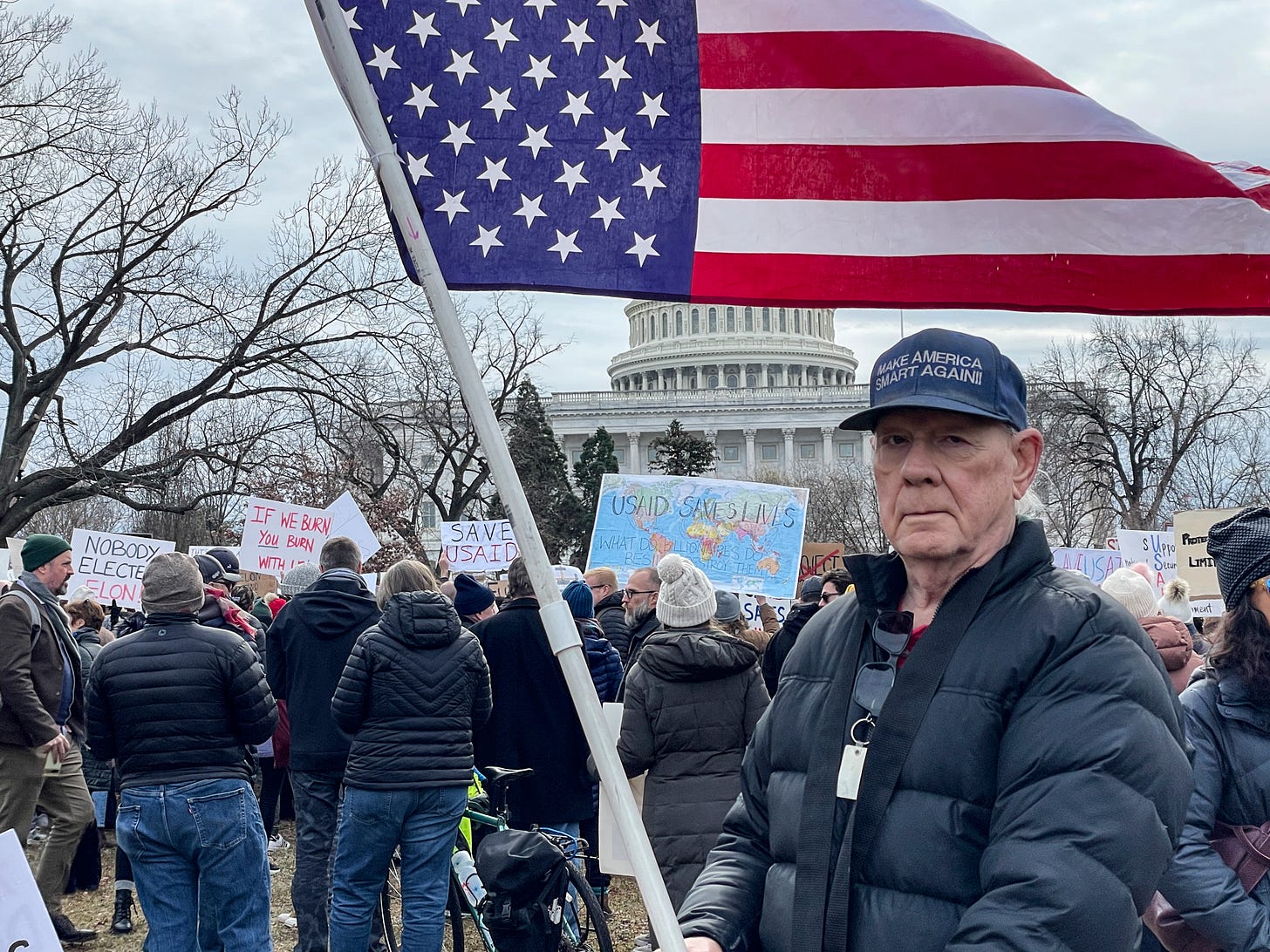
Given events since the inauguration, the destruction of our democracy no longer seems a far-fetched notion. I’ve been thinking about what democracy means, how we keep it, and what it would be like to lose it. Although I’m a word person, in this post I defer to the awesome power of pictures.
Sue Dorfman is a contract photographer for ZUMA Press. You may have seen her work in outlets like the Wall Street Journal, the Guardian, and Mother Jones. Sue overlapped with me at Oberlin, though we didn’t know each other then. Now 70, she’s still traveling the country with her cameras, capturing this moment that feels so unreal to us all.
Here in DC, Sue is everywhere. This month she photographed protests against Trump’s and Musk’s actions at the US Treasury, USAID, the Consumer Financial Protection Bureau, and the Department of Education. Sidelined with Covid, I couldn’t show up at any of these, so I appreciated Sue’s photos all the more.
Growing up in upstate New York, Sue took for granted that everyone had the right to vote. Not until she spent time in South Africa, photographing the anti-apartheid struggle, did she realize that not everyone had that right – and that some would fight and perhaps die to get it.
A few years later she documented Black voter mobilization in Selma, Alabama. While the Voting Rights Act had passed two decades earlier, the legacy of Jim Crow voting restrictions remained – conditions that echoed her experiences in South Africa. This led her to interview people in Mississippi and Massachusetts on what voting rights meant to them. The result was a short documentary film, Dying to Vote.

She later worked as a media strategist for voting rights organizations, with a focus on election protection. In 2020 Sue launched her nonpartisan photojournalism project, Documenting Democracy. She logged more than 24,000 miles across the country, photographing voter registration, voters, ballot counting, political rallies, candidates, and demonstrators.
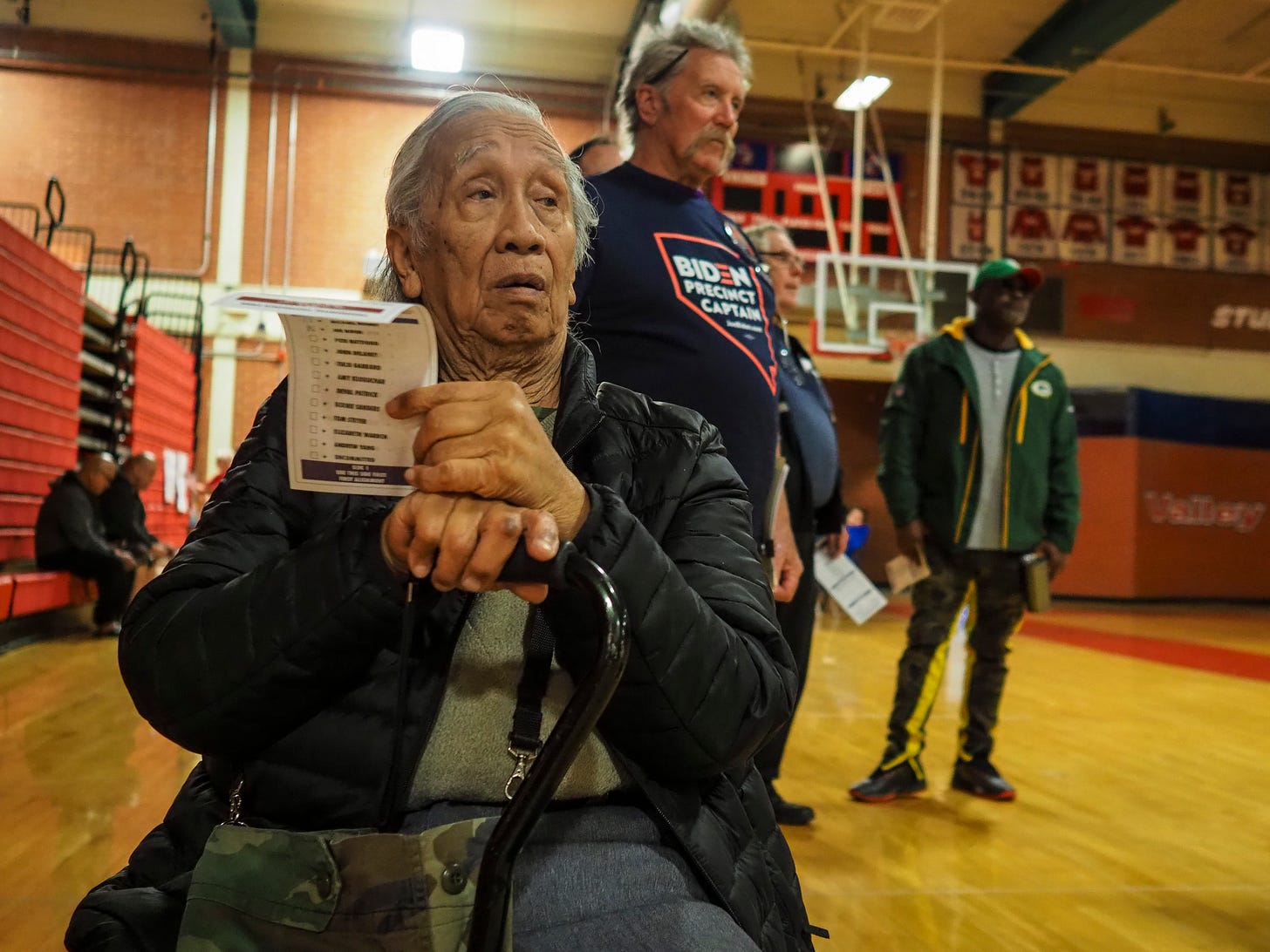

In 2022, Sue and I collaborated on a photo essay for the Oberlin Alumni Magazine. More images from those years can be seen on her Documenting Democracy website and in the Carnegie Reporter Voting Issue (winter 2022), published by the Carnegie Corporation of New York.
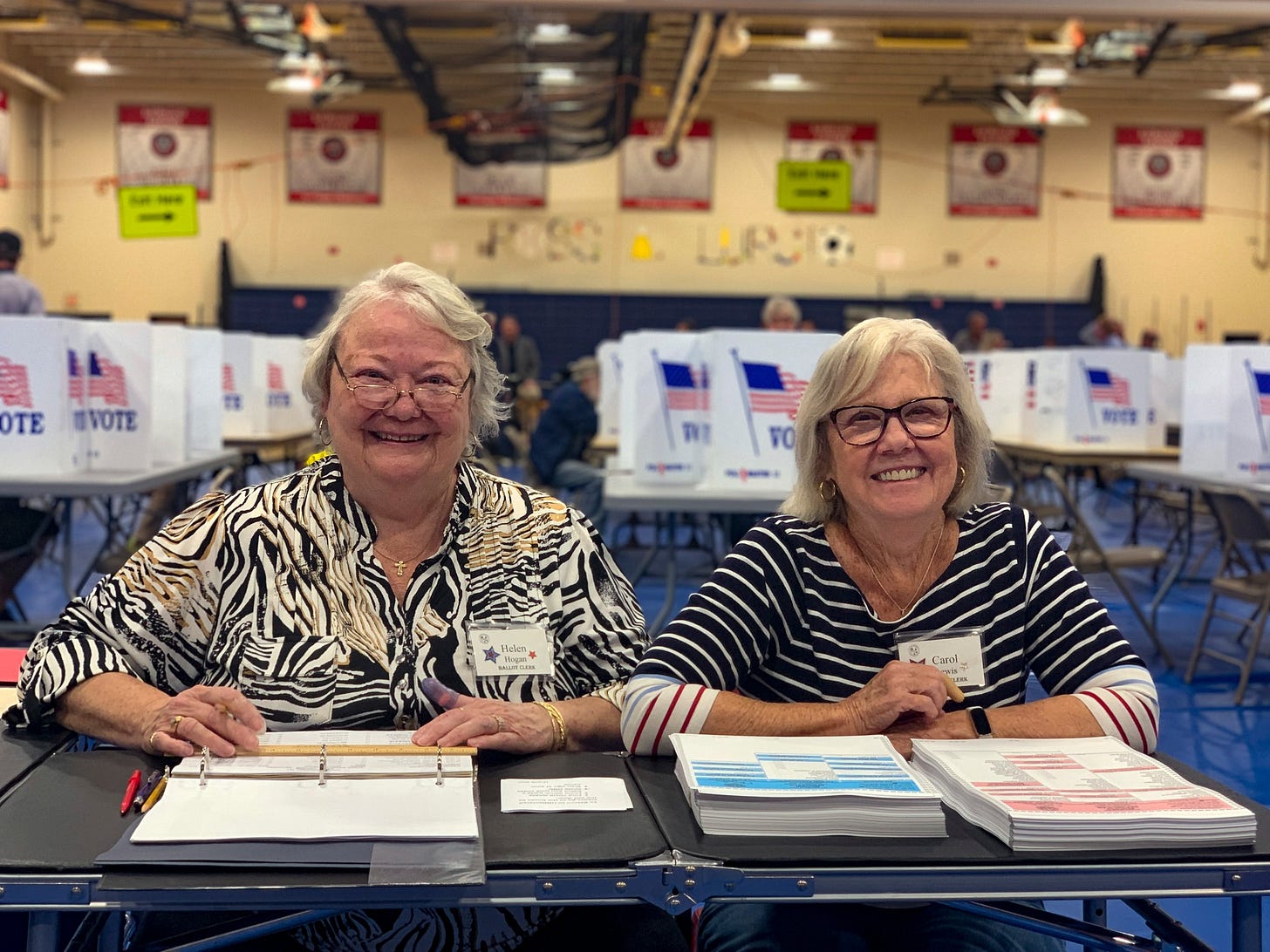
Last year, Sue again crisscrossed the country to photograph voters, canvassers, poll workers, and candidates ahead of the November 7, 2024, elections. “I aim to show what participation in our democracy looks like in different parts of the country, and to tell the stories of those involved,” she says.
Outside Harrisburg, Pennsylvania, Sue accompanied me and other canvassers as we knocked on doors for Harris, Walz, and down-ballot Democrats. Though the outcome was disappointing, I treasure these photos of an experience I won’t forget.
I asked Sue how her work has evolved and about what lies ahead.
CATHY: How has your photography practice changed over your lifetime?
SUE: I started shooting photos in my teens. I then took my career in other directions for a few decades, but I always used photography as a tool in whatever work I was doing. In my 60s I returned to my original path, and I’ve been photographing professionally since then.
In terms of technical evolution, I started out with regular film cameras. When my son was young, I closed my darkroom and began shooting with small, auto-focus “idiot cameras.” When I returned to using “real” cameras, in my case Olympus, I found the skills I had developed by pushing idiot cameras to the max also transferred to shooting on my iPhone. My eyesight isn’t as good as it once was, so I tend to do more close-ups rather than wide-angle shots. I do miss shooting film. I’m old school and still adjusting to digital.

CATHY: In this new political landscape, what do you plan to photograph, and how will you disseminate your work?
SUE: I believe it’s critically important to tell the stories of how this administration’s policies impact people’s lives. I will also continue documenting democracy. While many states are advancing voting rights, some are not, and equal access to the ballot may be severely curtailed. As far as dissemination, ZUMA Press wire distributes my photos internationally. This spring I’m on assignment to photograph programs that amplify civic participation and awareness. I have four books in various prepublication stages. And, of course, I’m always looking for new photo contracts.
CATHY: You’re 70. Why not retire?
SUE: I can’t imagine not photographing. It’s how I see and am present in the world. It’s how I can share what I’ve seen and experienced and, perhaps, change hearts and minds with new understandings.
Where to see Sue’s photos
Documenting Democracy website: https://docdem.suedorfman.com
Instagram: @suedorfman8
Facebook: https://www.facebook.com/sue.dorfman.9
To request permission to use an image or to see more, message Sue on any of these platforms, or contact me and I’ll put you in touch.






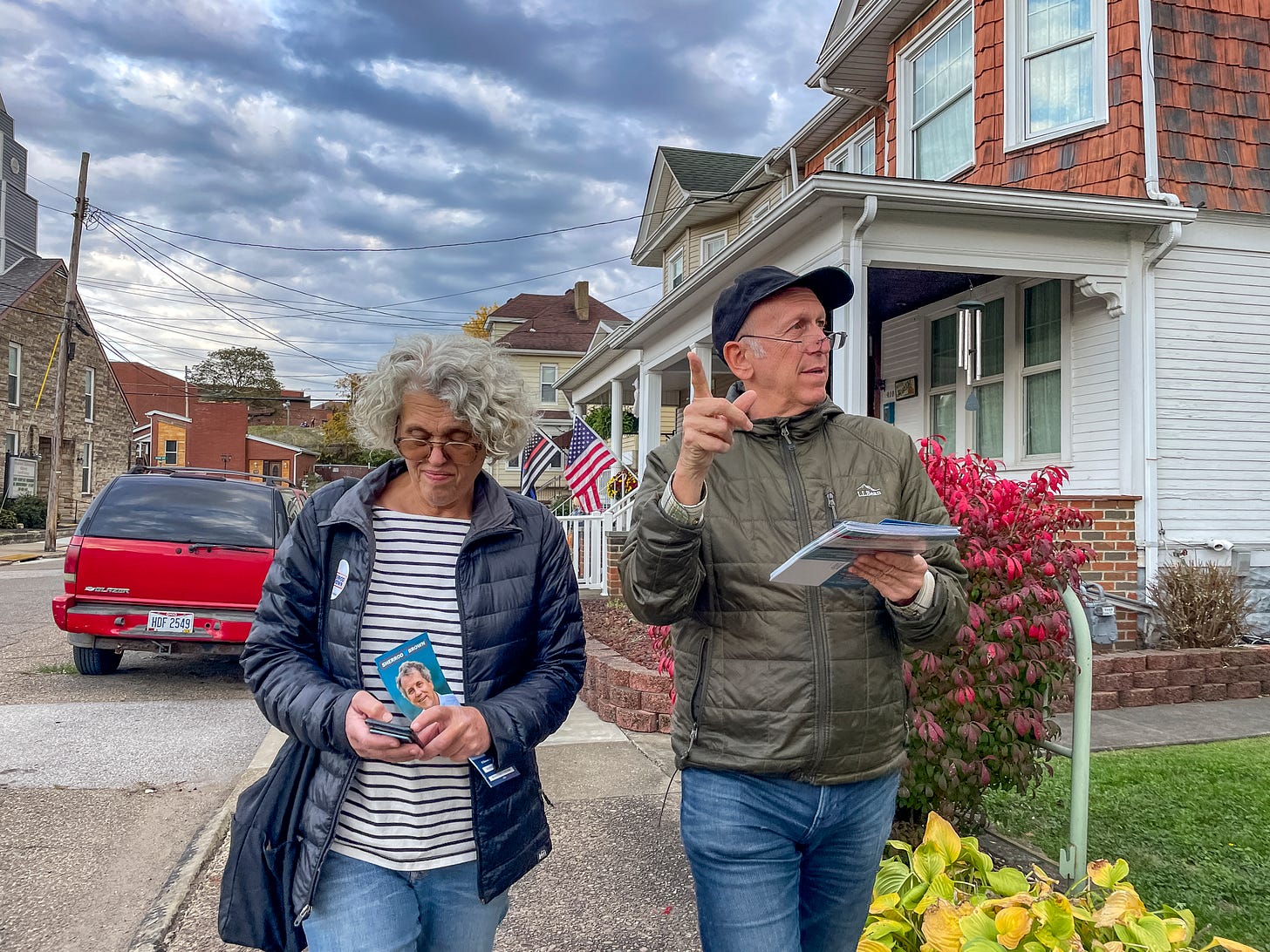
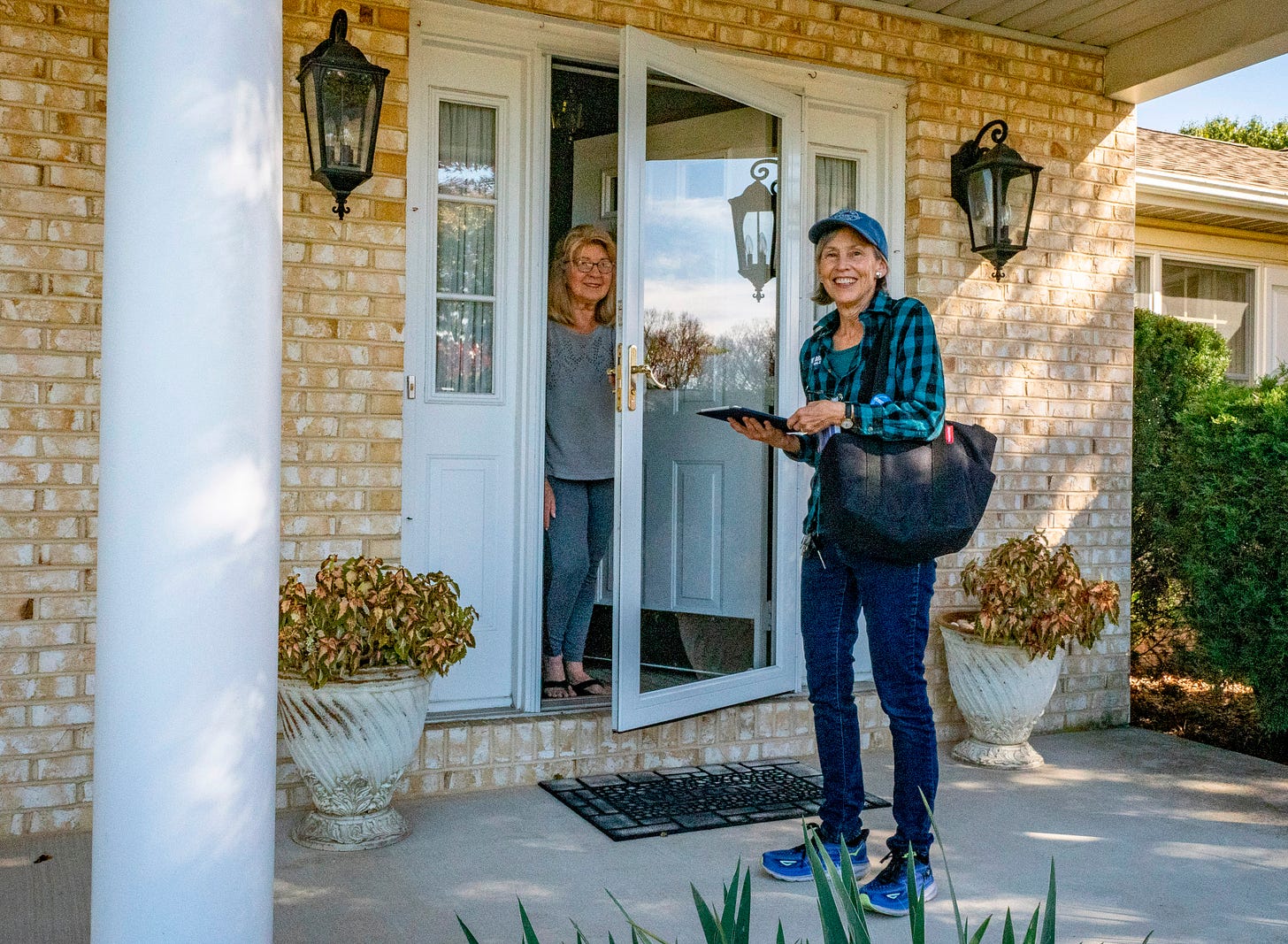

Thanks so much for this great post! I read your photoessay in the Oberlin Alumni Magazine and was really inspired. It's more important than ever that she is documenting democracy in all its forms.
These are great photos--and we need them. Hats off to you both, from another proud Oberlinian. (72)